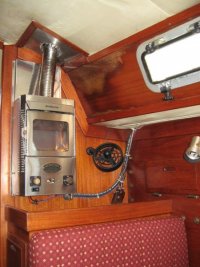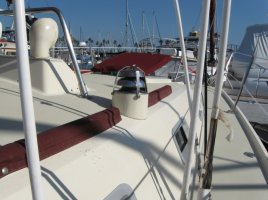Kerry Kukucha
Member II
Hello All:
With Fall upon us, & hopes of extending our sailing season, I am looking at installing a heater. Having reviewed some recent & earlier posts on this topic, I am contemplating a mixed system that would include a Dickinson "Newport" propane heater (to be mounted on the stbd side bulkhead before entering the v-berth); will also look at adding near the galley/aft cabin, a fan coil that draws heat from the engine's hot water heating loop. In combination with 3 small circulating fans already existing, I think I should end up with aprox. 18,000 btu of heating & reasonable air circulation, at about one-quarter the cost of an Espar D5.
I would be very interested to know if anyone has a Dickinson Newport, & if so, would greatly appreciate any thoughts & comments on their experience?
many thanks,
With Fall upon us, & hopes of extending our sailing season, I am looking at installing a heater. Having reviewed some recent & earlier posts on this topic, I am contemplating a mixed system that would include a Dickinson "Newport" propane heater (to be mounted on the stbd side bulkhead before entering the v-berth); will also look at adding near the galley/aft cabin, a fan coil that draws heat from the engine's hot water heating loop. In combination with 3 small circulating fans already existing, I think I should end up with aprox. 18,000 btu of heating & reasonable air circulation, at about one-quarter the cost of an Espar D5.
I would be very interested to know if anyone has a Dickinson Newport, & if so, would greatly appreciate any thoughts & comments on their experience?
many thanks,

 My interior (at least that part) is like Craig’s. He didn’t seem to think he could mount a bulkhead radiant heater. I’d like to install a P12000, but haven’t looked into the installation issues yet. I wonder what you’ve come up with if your interior is similar to mine (and Craig's).
My interior (at least that part) is like Craig’s. He didn’t seem to think he could mount a bulkhead radiant heater. I’d like to install a P12000, but haven’t looked into the installation issues yet. I wonder what you’ve come up with if your interior is similar to mine (and Craig's).
